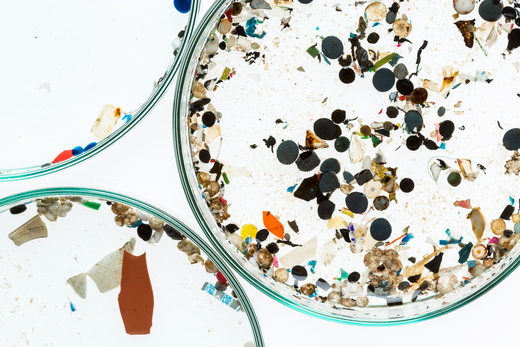
© Greenpeace
The
proliferation of
microplastics in the ocean has led to concerns that they might work their way up the food chain to us.
But when researchers at Heriot-Watt University set out to investigate that concern, they found that plastics in our own homes pose a much greater threat to humans.
The results of the study,
published March 29 in
Environmental Pollution, found that humans likely consume about 114 plastic microfibers each meal simply from household dust that settles on their plates.
Researchers gathered mussels from around the coast of Scotland in order to assess how many microplastics humans might ingest by eating the mussels.
As a control, they also set Petri dishes filled with sticky dust traps next to dinner plates at three separate homes.
Fourteen pieces of plastic settled on the dishes after 20 minutes, about the length of a meal. Given the difference in size, scientists calculated 114 such pieces would settle on a plate during the same time.
That adds up to 13,731 to 68,415 pieces per year.
In comparison, researchers calculated that eating mussels would only lead humans to ingest 100 microplastics yearly. Each mussel they studied contained about two plastic particles.
"These results may be surprising to some people who may expect the plastic fibres in seafood to be higher than those in household dust," senior study author Dr. Ted Henry said in a Heriot-Watt University
press release.
The study's authors did not think that the plastics came from the home-cooked meals used in the study or the kitchens where they were prepared.
"We do not know where these fibres come from, but it is likely to be inside the home and the wider environment," Henry said in the release.
Friends of the Earth member Julian Kirby provided the university with insight into how plastic particles end up in dust.
"Plastic microfibers found in the dust in our homes and the air we breathe can come from car tyres, carpets and soft furnishings, as well as clothes such as fleece jackets. These are regularly shedding tiny bits of plastic into the environment as they are worn away," he said in the Heriot-Watt release.
According to a
study published in
Lancet Planetary Health in October, 2017, the proliferation of microplastics in the environment is a concern in part because the impact on human health is still not well-known.
However, even if marine microplastics are not the main source for human consumption, they are still a major problem for
marine life. The study also marked the first time microplastics were found in the protected mussel species
Modiolus modiolus.

Comment: The Health & Wellness Show: Not to get Drastic, but the Plastic is Making us Spastic!